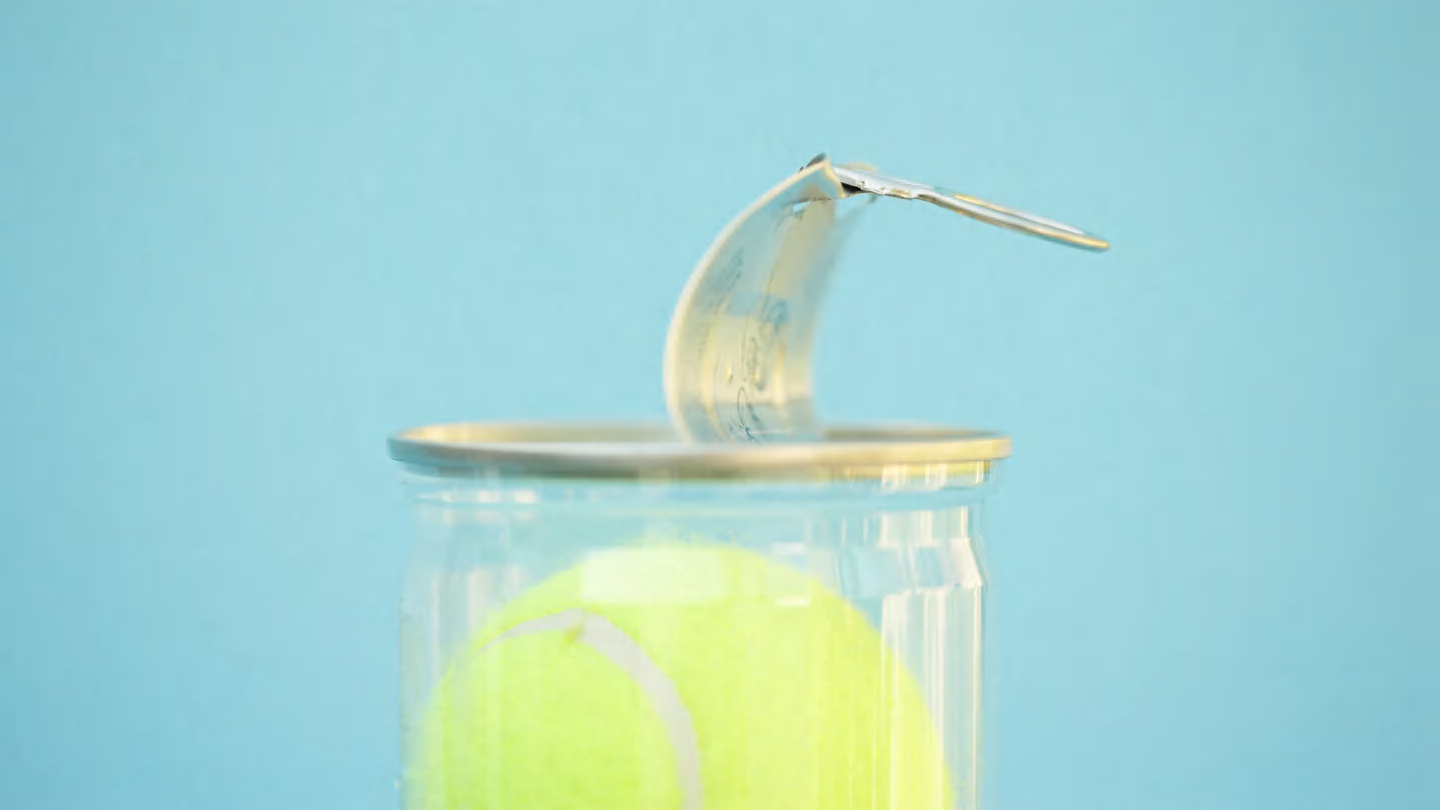Why Do Tennis Balls Come in Airtight Containers? - 3 minutes read

Tennis balls occupy a unique space in sports equipment. (And no, we’re not talking about the fact they’re prized by dogs.) They’re shipped and sold in a pressurized pop-top container, a peculiar method of distribution that you don’t see with baseballs or basketballs. So why do tennis balls require this type of treatment?
Like a lot of packaged goods, it comes down to shelf life. Tennis balls have a felt-covered surface with a hollow rubber core that’s filled with either air or gas and pressurized to around 27 pounds per square inch (PSI), or around 12 PSI more than normal air pressure at sea level. If the balls were sold “loose,” meaning they came either in standard packaging or sold out of bins, they would quickly lose their internal pressure. Putting them in a sealed can forces the ball to retain its internal PSI: As a result, the balls are as pressurized and bouncy upon opening as they were at the time of manufacturing.
So does this mean balls begin to lose their bounce as soon as they’re opened? Pretty much. The rubber used isn’t airtight, and air can therefore escape from inside the ball to the outside. The process speeds up once the ball is put in play, with every whack of a racket and bounce off the court forcing more air out.
For an average player, this could mean being able to use a tennis ball in prime condition for around two weeks. In a professional setting, the balls may be switched out much more frequently, with new cans dispensed every seven to nine games.
The origin of pressure-packing tennis balls dates to the 1920s, when sporting goods companies Wilson and Pennsylvania (later known as Penn) began promoting an airtight cardboard (later metal) tube.
“Pressure Packing, exclusive with Pennsylvania Balls, represents the greatest improvement made in tennis balls since the inception of the game,” read one can.
These early pressurized containers had a key that opened them, sardine-style, but couldn’t be resealed. The more modern soda-style pop-top with a plastic lid was introduced by Penn in 1972. This was around the same time the balls defaulted to the optic yellow color to make for easier visibility when games were broadcast on television.
So will a sealed can of tennis balls last for years? Not likely. Air will still find its way out of the cans, so an old canister discovered in your basement may not have the bounce you’re looking for.
Because the balls have such a short lifespan for optimal performance, the game of tennis has a waste problem: According to a 2023 Associated Press story, 330 million balls wind up in landfills each year. Don’t tell your dog.
Have you got a Big Question you'd like us to answer? If so, let us know by emailing us at bigquestions.com.
Source: Mental Floss
Powered by NewsAPI.org